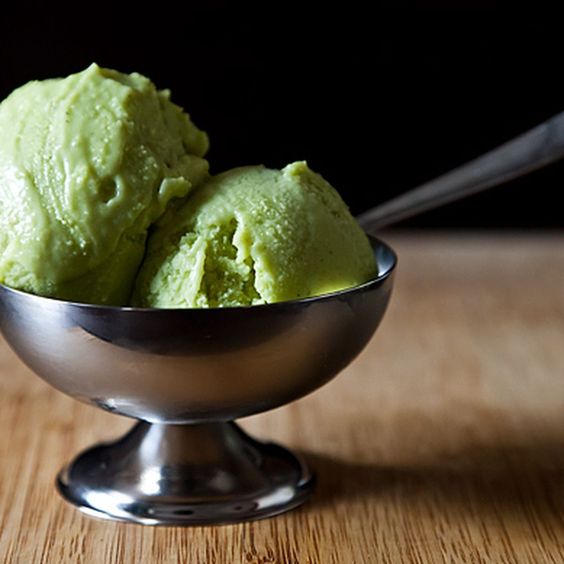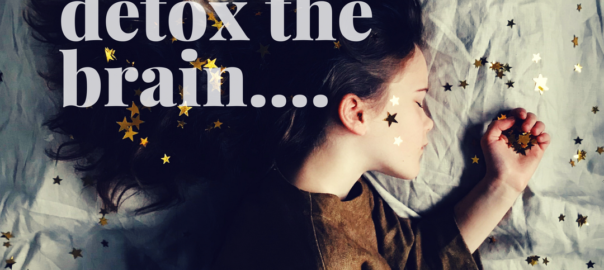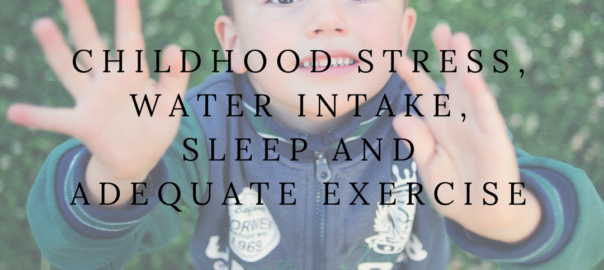This month we will be talking about the future of our generation and how to best protect them to maintain health and vitality! We will be going over different aspects to keep our kiddos healthy. This week we will be talking about the health of their brain in nervous system, then on to nutritional recommendations/protocols, EMFs and digital toxins, and stress protocols.
Brain & Nervous System Health
As I’ve said before in previous blogs, chiropractic and nervous system health is VITAL for all, but ESPECIALLY in children is where we can make the biggest impact.
The most dynamic phase of brain development is from birth to age 2, so it is here we have the biggest impact. This is why I see so many infants in my practice, we can actually CHANGE their future by maintaining the health of the brain and nervous system.
The brain and nervous system control every function within our body. So, ultimately when the brain and nervous system aren’t in harmony, then our body won’t be either.
Same goes for kids.
What often most happens with children is birth trauma. It largely goes unspoken of and consequently our little babies are largely under treated. Left untreated, birth trauma can lead to a sequela of complications both short and long term.
Some contributing factors may include intrauterine constraint, drug use such as ptocin to increase the intensity of contractions, forceps or vacuum extraction and c-section delivery. According to a study in the Journal of American Osteopathic Association, out of 1500 babies 90% had suffered birth trauma affecting their cervical spine and cranial bones and thus their nervous system health.
If your kids aren’t at school age yet, getting their brain and nervous system checked should be your main priority to set them up for success.
But, since this blog IS about school aged children, cranial chiropractic care should also be part of their health checks.
Why you say??
One main reason is that when there is pressure on the brain, the brain won’t work efficiently. This means for kids trying to learn a wide variety of subjects, their ability to absorb/understand won’t be efficient. Their neuroplasticity will be decreased as a result.
This is why working one the head is my priority #1. Fix the nervous system, heal the body.
Another reason… immune system. The nervous system controls that too. When it’s weak, that means your immune system is compromised, your kids will be sick more, miss more days from school and overall not be happy.
Reason number 3, body pains/injuries. This is what I describe to my patients. The muscles are dumb. They only do what they are told from the nervous system. So, if the signal to the muscle is improper then the muscle will be weak, and more prone to injury. You want to prevent injuries for kids in sports and otherwise? Make sure you get routine care for their nervous system. Want them to heal from injuries quicker, then get them in immediately after an injury to ensure the brain doesn’t have time to create an improper compensatory pattern that will be permanent.
Reason number 4. Sleep!. The parasympathetic nervous system is the part of our nervous system that controls rest and digestion. When not being stimulated, your child will have difficultly getting into that stage. Cranial chiropractic care directly stimulates this system, and even my adult patients can tell you feeling relaxed after care is alwayssss felt. Its because of this system.
Reason number 5. Better focus. As mentioned in number one, the brain won’t work as efficiently when inflamed, but also the emotional brain won’t work as well either. When in that sympathetic phase, fight or flight, the child can’t calm down, and forget about focusing. Stabilizing the head and brain through care will inevitably also cause changes in mood stability as well. This helps kids stay fun and lighthearted.
Reason number 6. Less allergies. Airborne wise, when the sinuses are draining properly, less allergies will happen. Additionally, when digestion is running smoothly because of that parasympathetic stimulation, they will react less to foods. This doesn’t mean they still get to eat whatever they want, we will go into that next week, but their reaction will be decreased because their inflammation is down. They will also be able to process toxins better. When the lymphatic flow is balanced, things will be eliminated better.
Reason number 7. Improve posture by promoting body balance. We see bad posture everywhere is school aged children now. Texting and screens definitely don’t help, as well as improper backpack usage, but chiropractic and cranial work can dramatically affect the posture in a child. This not only improves function but also promotes self esteem. Scoliosis is a CRANIAL problem. AGAIN, scoliosis is a CRANIAL problem because of torsion of the brain tissue and spinal cord. If left untreated this can cause a myriad of symptoms for your child later on including lung and heart function and pain and discomfort.
Reason number 8. Bed wetting. Bed wetting can occur and still does occur frequently.In a study, 46 enuretic children that were placed under chiropractic care. The children were under care for a 10 week period preceded by and followed by a 2 week nontreatment period.
25% of the treatment-group children had 50% or more reduction in the wet night frequency from baseline to post-treatment while none among the control group had such reduction.
————————–
I will also say, being a researcher myself and going to international chiropractic conferences to speak, that mostly all the chiropractic research is a good majority from osteopathy and cranial work. Meaning cranial care trumps all! 🙂
Reasons kids miss school, and ways chiropractic helps alleviate this:
1. Ear infections: Chiropractic research with EAR infections showed that 93% improved 75% in 10 days or less, 43% with one for 2 treatments.
2. Sick: There are a number of research articles that have consistently shown bursts of white blood cell activity following chiropractic adjustments, and recent research out of the University of Virginia Medical School just found that the lymphatic system has direct contact with the brain!
3. Asthma: There is a growing amount of research and case studies supporting the efficacy of chiropractic adjustments in helping children with asthma. Chiropractic adjustments can help children better deal with conditions such as asthma by reducing irritation on the nervous system and boosting the healing ability of the body.
4. ADD/ADHD:There is a growing body of research that is linking physical stress of the nervous system to the undesirable behaviors that are common to the diagnosis ADHD. How many of these kids are suffering with subluxation or nerve irritation that has gone undiagnosed? They can’t calm down the brain.
5. Bullying at school. The Report is largely made up of cases histories of all the 244 boys many of whom undoubtedly suffered from various emotional and learning disorders.
I have been able to notice a marked improvement in the mental and physical condition of the boys and in school work and conduct; also, there has been a larger number of paroles during that period than any previous period during the past four years.”
“We have been able to accomplish results far beyond their fondest hopes and expectations in the rehabilitation of these boys. The teachers have voluntarily and without solicitation signed a petition asking for an all-time or full-time chiropractor in that institution.”
6. Female issues related to menstruation. Women with premenstrual syndrome (PMS) are more likely to have spinal dysfunction, compared with PMS-free women,. Investigators examined 54 women with PMS and 30 women without PMS.
A relatively high incidence of spinal dysfunction exists in PMS sufferers compared with a comparable group of non-PMS sufferers. This is suggestive that spinal dysfunction could be a causative factor in PMS and that chiropractic manipulative therapy may offer an alternative therapeutic approach for PMS sufferers.”
Walsh MJ, Polus BI, T. J Manipulative Physiol Ther. 1999 May; 22 (4): 216-220
7. Fatigue/ Tired. More than 60% of the population adults and children battle sleep.
Studies show that chiropractic can actually help with insomnia allowing you to get better, more restful, and more beneficial sleep.
The combination of pain alleviation, increased flexibility, and overall wellness as well as stress relieving properties allow your body and mind to relax so that you can fall asleep easier and stay asleep. Incorporating chiropractic care into your everyday routine can help you get a better night’s sleep.
8. Pains/Growing Pains. Growing pains are NOT normal, they are a sign of nervous system stress. Here is a case study showing how chiropractic care improves pain. After one visit, the patient did not complain of leg pain for three days. After 7 visits, the mother reported that his son was sleeping through the night without leg pains. By the 15th , the child had remained for the most part symptom-free for almost 3 weeks.
This can all be applied to college aged kids as well, where the intellectual demand is even higher!! Chiropractic should be part of your health care!!
OIL OF THE WEEK

An exceptional addition to the resinous oils doTERRA offers, Copaiba is extracted from copaiba trees in the Amazon rainforest. The essential oil is steam distilled from the copaiba oleoresin, a substance made up of resin and essential oils. The collection process of the oleoresin is unique among essential oils—it is tapped from the tree in a similar way to how maple trees are for their syrup. The oleoresin is then steam distilled to produce the essential oil.
Our Favorite Uses
Copaiba is a incredibly versatile oil that has been used for centuries. See some of our favorite ways to use Copaiba below:
- For your skin. Copaiba has the capability of keeping your skin clear and clean while reducing the appearance of blemishes. To take advantage of this benefit, add Copaiba to your toner and apply to your face in upward circular motions. Or, apply it directly your skin before applying moisturizer.
- As a personal fragrance. Oils that blend well with Copaiba include Roman Chamomile, Cedarwood, Sandalwood, Frankincense, or Ylang Ylang. Using any of these oils that appeal to you, create your own personal fragrance in a roller bottle, and then fill the rest of the bottle with Fractionated Coconut Oil.
- For whole-body wellness. Most of the body can benefit from Copaiba—it supports the cardiovascular, immune, digestive, nervous, and immune system.* South Americans have used copaiba resin for the health of many of these same systems. To take advantage of these benefits, add one to two drops to water, juice, or make your own tea using warm water and honey.
- To calm occasional anxious feelings. When you’re facing a stressful day ahead or feeling worried, diffusing Copaiba’s woody scent can help calm any anxious feelings you may be experiencing.
- As a way to protect and support your cells. Take one to two drops in a veggie capsule to take advantage of the antioxidants—the substance that stops potential damage to your cells from oxidation.*
- To unwind. Diffuse it in your room and focus on the scent to fall into a meditative state. Or, you can also use in a calming bath by adding two to three drops to body wash before mixing it in the water.
The Chemistry of Copaiba
The synergy of chemical constituents in Copaiba makes it unique. Copaiba’s main chemical component is beta-caryophyllene, a chemical similar to cannabinoids found in cannabis that may protect nerve cells and have benefits for the cardiovascular and immune systems.* However, while caryophyllene is responsible for some of the bioactive properties of Copaiba, many of the other properties of the oil are thanks to the diterpenes uniquely found in Copaiba.
Plant Description
Copaifera officinalis trees are evergreen trees native to Central and South America, where it flourishes best in tropical rainforest habitats (though it can grow in both wet and dry forests). The trees themselves are tall, and can grow to more than 100 feet tall.
Sourcing
The Amazon rainforest represents over half of the planet’s remaining rainforests. doTERRA is proud to partner with a large network of copaiba harvesters that sustainably collect their oleoresin and ensure that the trees will be around for years to come.

AMAZING Avocado Gelato
A great go to for kids without all the sugar. Also a great brain food!
Ingredients:
2 tbsp chocolate protein powder
½ cup unsweetened almond milk
2 tbsp unsweetened cocoa powder
¼ cup avocado (cut in cubes)
1 tbsp unsweetened coconut flakes
1 drop stevia, chocolate flavor
1 tsp coconut butter
Preparation:
- In a blender, mix all the ingredients except coconut flakes. Blend until creamy and smooth. Mixture should be very thick!
- Smooth entire contents into a cake pan or drop in tablespoon-sized balls (like cookies, but a little thinner) onto a cookie sheet. Note that it is easier to spread the mixture into a cake pan, but it is a little more challenging to cut it after it has been frozen. Dropping onto a cookie sheet can be a little messy, but it is easier to grab and eat after freezing. Try it both ways and see how you like it.
- Sprinkle coconut over the top.
- Place cake pan or cookie sheet in the freezer for at least 2 hours until frozen.
- Serve as a frozen treat. They taste like Fudgesicles!
That is all for now,
Wishing you a Happy and Healthy Week.
Dr. Hamel






